Abstract
This survey defined the pattern of invasive Haemophilus influenzae infections during 1990-2 in six regions in England and Wales during the pre-vaccination era providing a baseline against which any changes in patterns of disease due to the introduction of the Haemophilus influenzae type b vaccination programme can be monitored. A total of 946 cases of invasive Haemophilus influenzae were recorded during the survey period of which almost 90% were due to type b and most of the remainder were non-typeable. Type b infections occurred predominantly in children less than 5 years of age (88%) with the highest attack rate in male infants in the 6-11 month age group. Diagnostic category varied with both age and serotype; meningitis was the commonest presentation overall but pneumonia and bacteraemia were more common in adults and non-typeable isolates. Mortality was highest in neonates and the elderly (over 65 years of age) who were more likely to have an underlying predisposing condition than older children and adults. Children under 5 years of age had a higher case fatality rate for non-typeable than for type b infections. Ampicillin resistance was 15% and there were no cefotaxime resistant type b isolates.
Full text
PDF
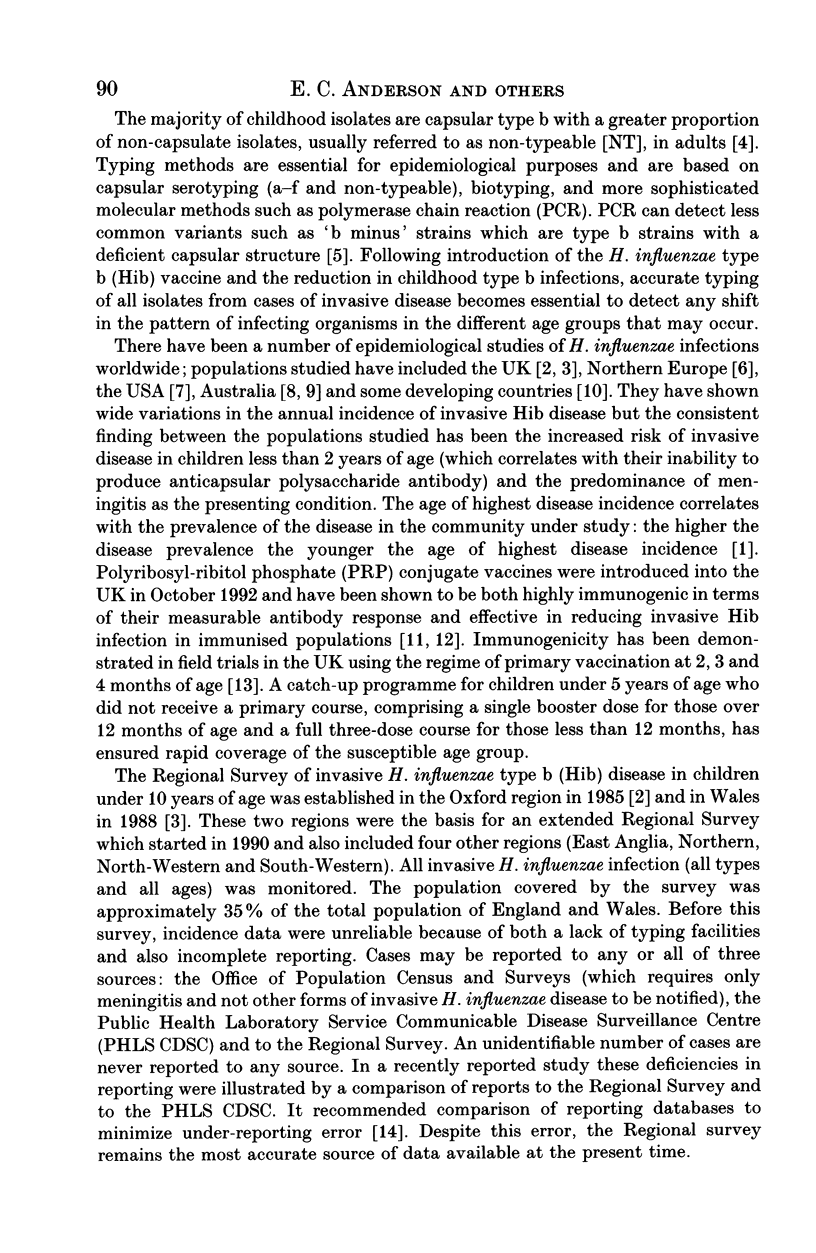
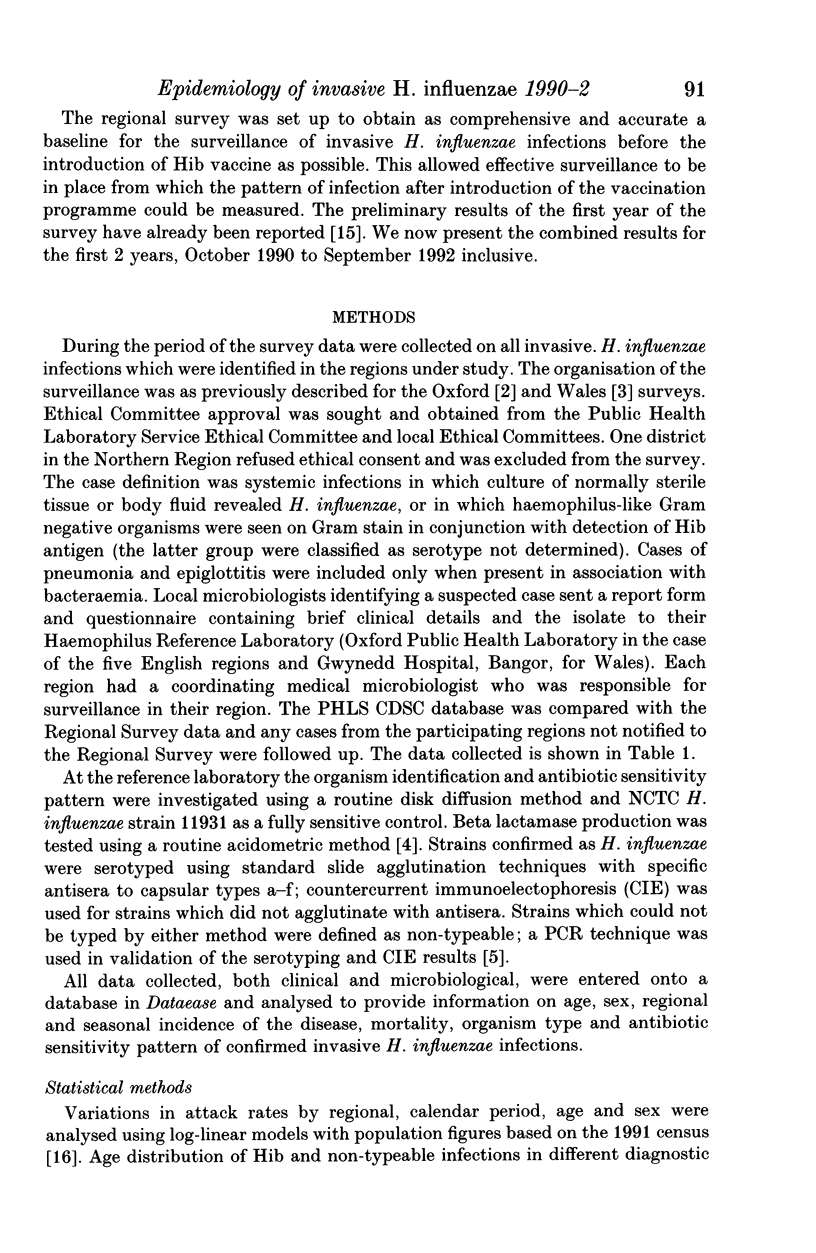


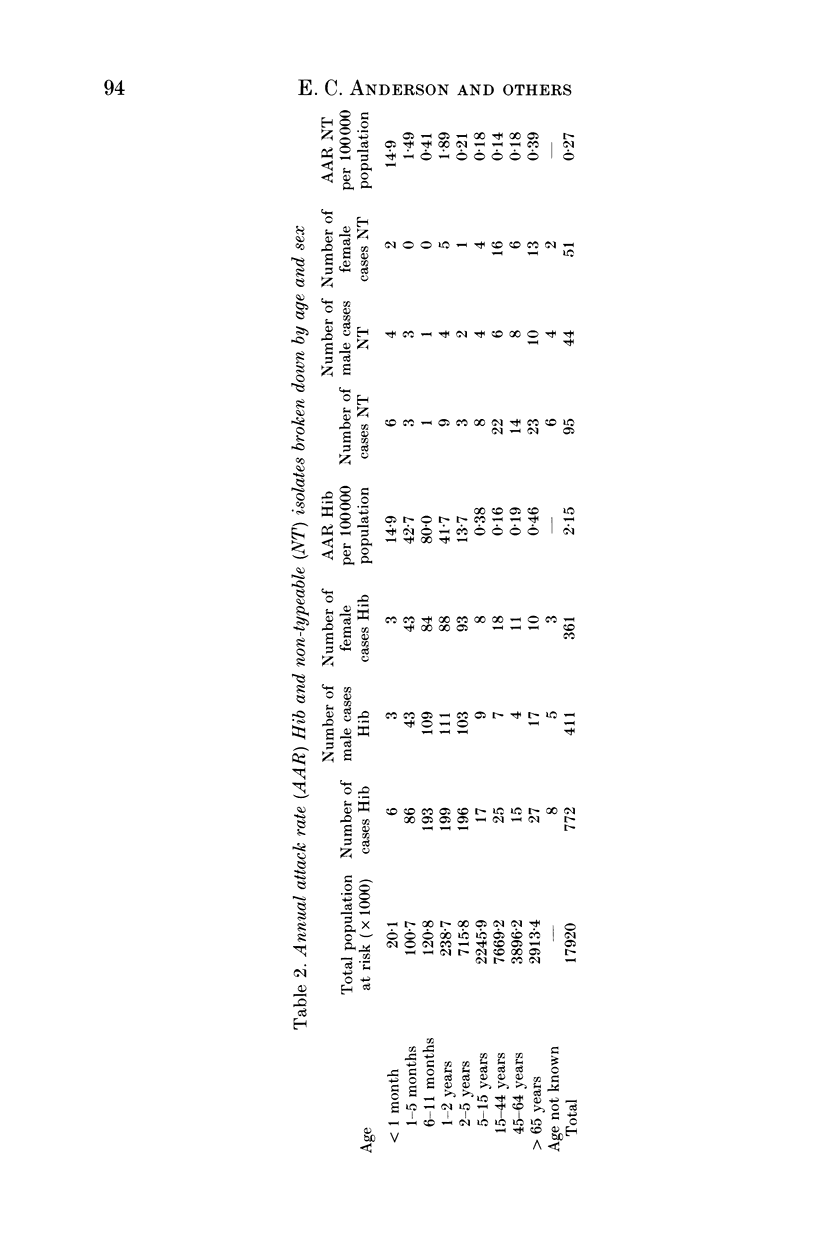
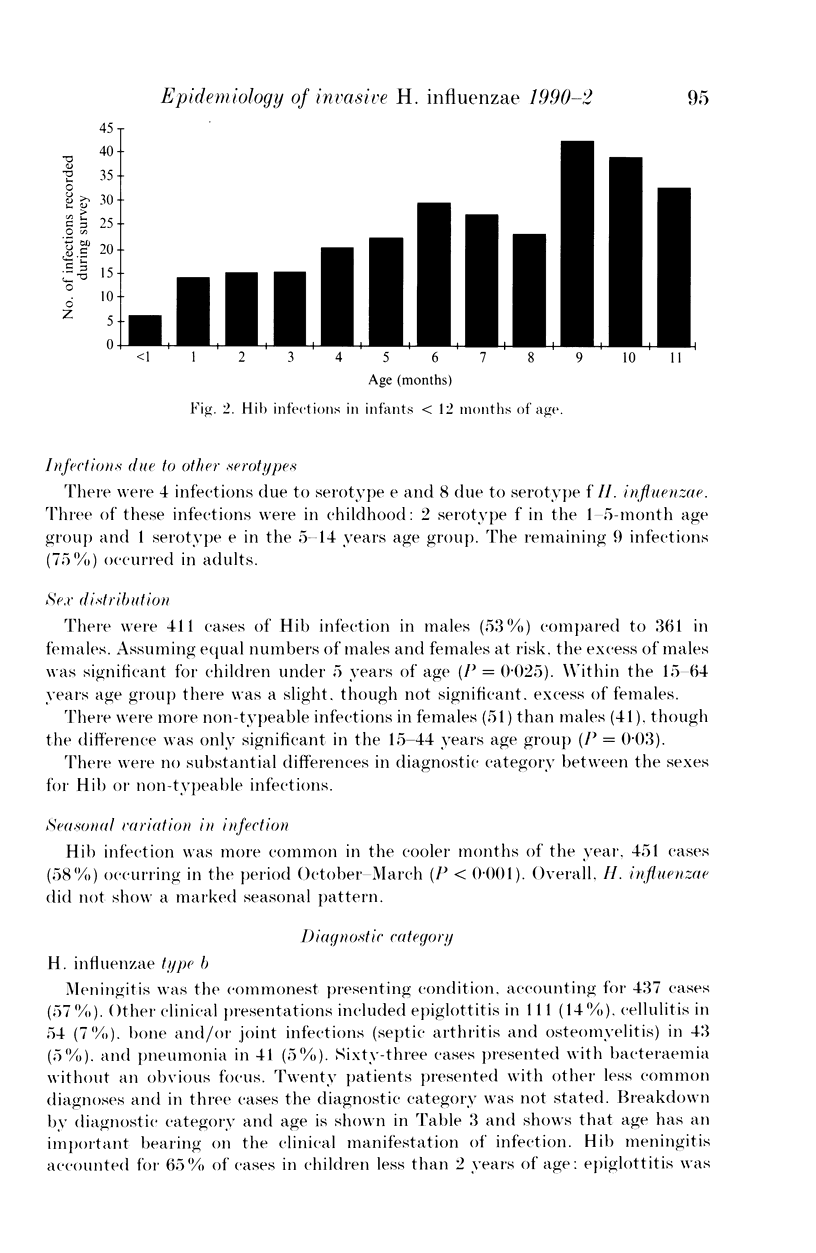


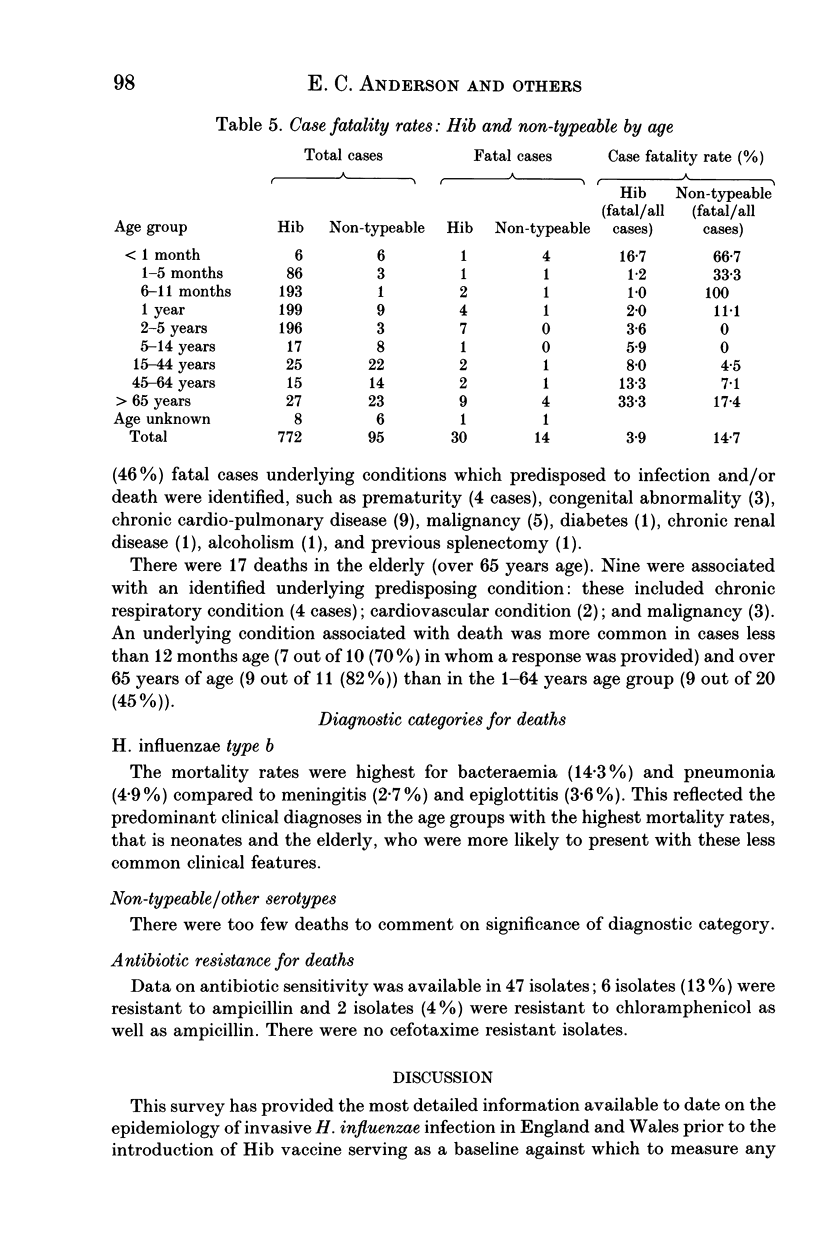

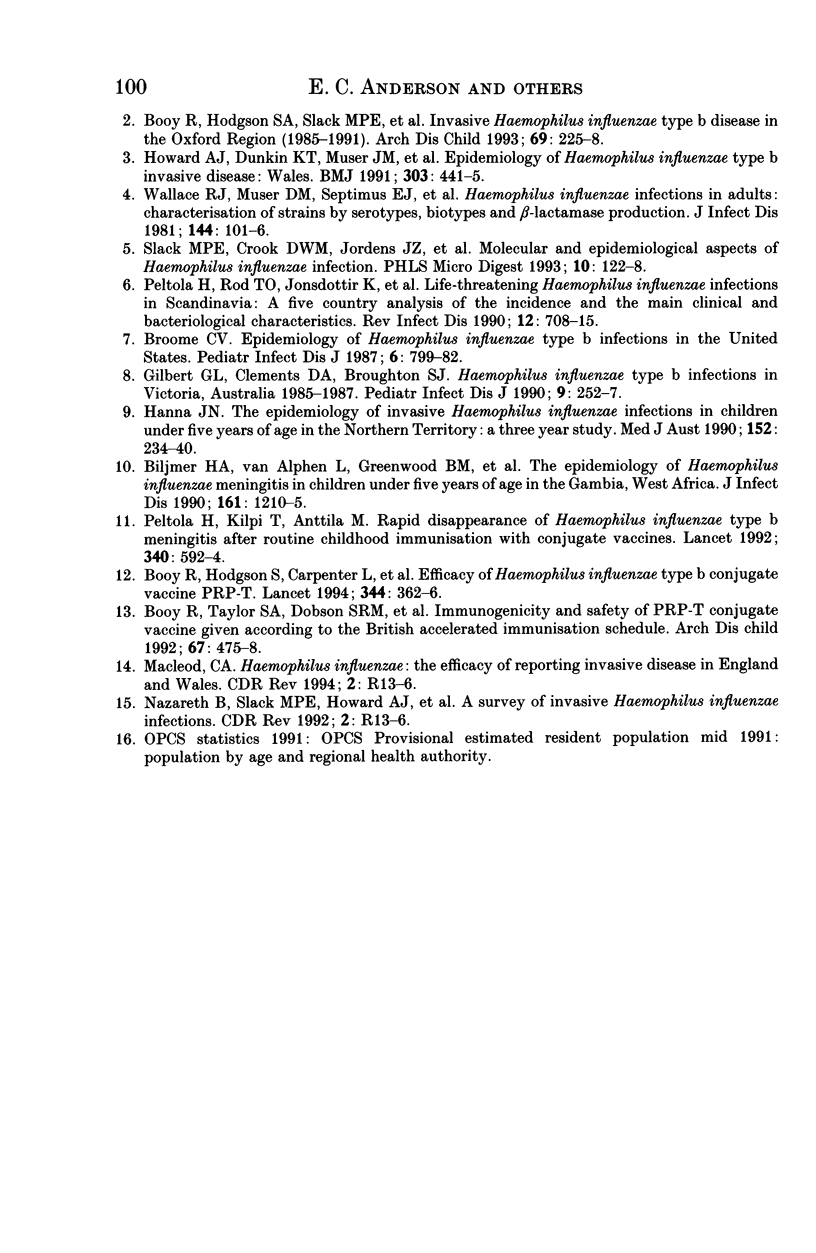
Selected References
These references are in PubMed. This may not be the complete list of references from this article.
- Bijlmer H. A., van Alphen L., Greenwood B. M., Brown J., Schneider G., Hughes A., Menon A., Zanen H. C., Valkenburg H. A. The epidemiology of Haemophilus influenzae meningitis in children under five years of age in The Gambia, West Africa. J Infect Dis. 1990 Jun;161(6):1210–1215. doi: 10.1093/infdis/161.6.1210. [DOI] [PubMed] [Google Scholar]
- Booy R., Hodgson S. A., Slack M. P., Anderson E. C., Mayon-White R. T., Moxon E. R. Invasive Haemophilus influenzae type b disease in the Oxford region (1985-91). Arch Dis Child. 1993 Aug;69(2):225–228. doi: 10.1136/adc.69.2.225. [DOI] [PMC free article] [PubMed] [Google Scholar]
- Booy R., Hodgson S., Carpenter L., Mayon-White R. T., Slack M. P., Macfarlane J. A., Haworth E. A., Kiddle M., Shribman S., Roberts J. S. Efficacy of Haemophilus influenzae type b conjugate vaccine PRP-T. Lancet. 1994 Aug 6;344(8919):362–366. doi: 10.1016/s0140-6736(94)91400-1. [DOI] [PubMed] [Google Scholar]
- Booy R., Taylor S. A., Dobson S. R., Isaacs D., Sleight G., Aitken S., Griffiths H., Chapel H., Mayon-White R. T., Macfarlane J. A. Immunogenicity and safety of PRP-T conjugate vaccine given according to the British accelerated immunisation schedule. Arch Dis Child. 1992 Apr;67(4):475–478. doi: 10.1136/adc.67.4.475. [DOI] [PMC free article] [PubMed] [Google Scholar]
- Gilbert G. L., Clements D. A., Broughton S. J. Haemophilus influenzae type b infections in Victoria, Australia, 1985 to 1987. Pediatr Infect Dis J. 1990 Apr;9(4):252–257. doi: 10.1097/00006454-199004000-00006. [DOI] [PubMed] [Google Scholar]
- Hanna J. N. The epidemiology of invasive Haemophilus influenzae infections in children under five years of age in the Northern Territory: a three-year study. Med J Aust. 1990 Mar 5;152(5):234-6, 238, 240. doi: 10.5694/j.1326-5377.1990.tb120916.x. [DOI] [PubMed] [Google Scholar]
- Howard A. J., Dunkin K. T., Musser J. M., Palmer S. R. Epidemiology of Haemophilus influenzae type b invasive disease in Wales. BMJ. 1991 Aug 24;303(6800):441–445. doi: 10.1136/bmj.303.6800.441. [DOI] [PMC free article] [PubMed] [Google Scholar]
- Mäkelä P. H., Takala A. K., Peltola H., Eskola J. Epidemiology of invasive Haemophilus influenzae type b disease. J Infect Dis. 1992 Jun;165 (Suppl 1):S2–S6. doi: 10.1093/infdis/165.supplement_1-s2. [DOI] [PubMed] [Google Scholar]
- Peltola H., Kilpi T., Anttila M. Rapid disappearance of Haemophilus influenzae type b meningitis after routine childhood immunisation with conjugate vaccines. Lancet. 1992 Sep 5;340(8819):592–594. doi: 10.1016/0140-6736(92)92117-x. [DOI] [PubMed] [Google Scholar]
- Peltola H., Rød T. O., Jónsdóttir K., Böttiger M., Coolidge J. A. Life-threatening Haemophilus influenzae infections in Scandinavia: a five-country analysis of the incidence and the main clinical and bacteriologic characteristics. Rev Infect Dis. 1990 Jul-Aug;12(4):708–715. doi: 10.1093/clinids/12.4.708. [DOI] [PubMed] [Google Scholar]
- Wallace R. J., Jr, Musher D. M., Septimus E. J., McGowan J. E., Jr, Quinones F. J., Wiss K., Vance P. H., Trier P. A. Haemophilus influenzae infections in adults: characterization of strains by serotypes, biotypes, and beta-lactamase production. J Infect Dis. 1981 Aug;144(2):101–106. doi: 10.1093/infdis/144.2.101. [DOI] [PubMed] [Google Scholar]
- Ward J. Newer Haemophilus influenzae type b vaccines and passive prophylaxis. Pediatr Infect Dis J. 1987 Aug;6(8):799–803. doi: 10.1097/00006454-198708000-00041. [DOI] [PubMed] [Google Scholar]


